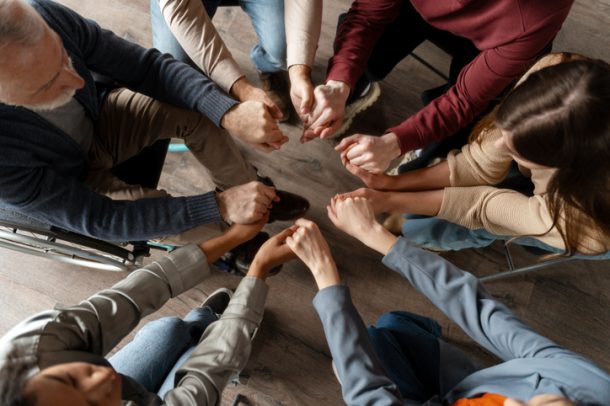Why allyship and teamwork matter to make accessibility happen

In our ‘Ask me Anything’ accessibility webinar a week or so ago, we discussed a really important question:
“How can you really be an expert in something you don’t have personal experience of? In what sense do experts with no lived experience of disability question the professional integrity of their practices?”
We totally agree with part of this question, which is that it’s important that you involve people with disabilities – and older people, for that matter – in your ways of working.
To give you some examples of how we’ve shared our expertise at Hassell Inclusion in making that happen:
- We’ve done a huge amount of research work with people who are neurodiverse, capturing their digital needs which WCAG misses – you can find our report on the findings of some of this research on the National Autistic Society site.
- We’ve regularly held webinars highlighting interviews we’ve done with people with lived experience of disability talking about their perspectives on tech and accessibility – for example, of somebody who is autistic, and somebody who is older, another group whose access needs aren’t well covered in WCAG.
- And last month our webinar provided hints and tips for how organisations can involve people with disabilities in user-research and user-testing, from my 25 year’s experience of making these more inclusive. It also gave the business reasons for why this is a great use of time and money for product teams.
So, at Hassell Inclusion we are really committed to “nothing about us, without us”.
However, from our perspective, it takes a team to make accessibility happen. And the experiences of people that we need to include aren’t just those of people with disabilities.
We have to start with what people with disabilities need and prefer – their lived experience. Which is why we advocate user-research with people with a variety of disabilities whenever our clients’ budgets allow.
But we also know from having done lots of research with people with disabilities that not everybody who has the same condition has the same needs. When we worked with 400 people to create our neurodiversity guidelines, comments like “if you’ve asked one person with autism, you’ve asked one person” and “you know it’s a spectrum” came out time and time again. People with what can be seen as similar conditions often prefer radically different things due to intersectionality, as we explored in our webinar on how we did the research.
So, it takes research experience to understand how to bring together what seem to be contradictory user-needs so that we all can understand them.
Similarly, if the idea of capturing those user-needs is to work out how to make digital technology that takes them into account, it’s really important that we bring in people with technology experience and design experience. That’s how guidelines like WCAG get created.
In our experience it’s also essential to involve people who have experience of managing digital teams, to get accessibility embedded efficiently in the processes that people creating products use. It’s not enough to know what needs to be done to deliver accessibility, but also to know how to make sure you have the right accessibility skills, practices and tools in product creation teams to actually do it.
The last thing is that strategy plays a crucial role.
Put simply, if your boss doesn’t allow you the time to think about accessibility, you won’t be delivering it to anybody. Hearts are won through listening to people with disabilities. But heads need to be won too, or else you won’t be able to prove the business value of designing for everyone’s needs, and get the budget to enable it. You need strategic business experience.
To deliver accessibility, to make it happen, you need all these things to come together, with everyone respecting each other’s experience. That’s what a11yship means. Everybody has different lived experiences, things that they’re an expert in. And we need to call on all of this expertise if we’re going to deliver accessibility well.
To give an example of this, at the webinar we had a question from someone in scientific publishing about creating retrospective alt-text for articles which include charts. The difficulty is that often the person who wrote the article isn’t around to do the alt-text. So, the concern from the person who asked the question was: could you inadvertently change the meaning of the chart by creating alt-text when you’re not an expert in the science behind the article?
The expertise you need, is to know why the author included the chart. If “a picture tells a thousand words”, which of those words are important? Because that’s what people who are blind need the alt-text to convey– the purpose of the image. WCAG is very clear about this.
This is why this situation is so challenging… Our views at Hassell Inclusion are that if you don’t have the author around, then you – as an accessibility expert – can make your best guess. But it’s always better to have the person who has the domain expertise of the article’s subject create the alt-text.
Which is why we need allyship and a team approach. We all have different roles to play. They’re all important. And, if we work together, we can make accessibility happen.
